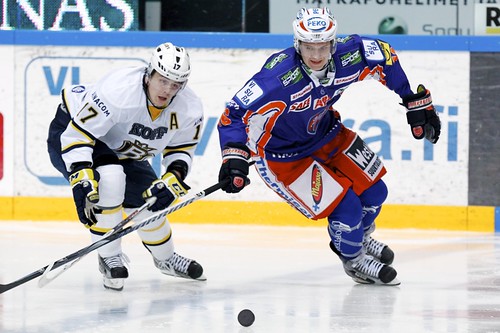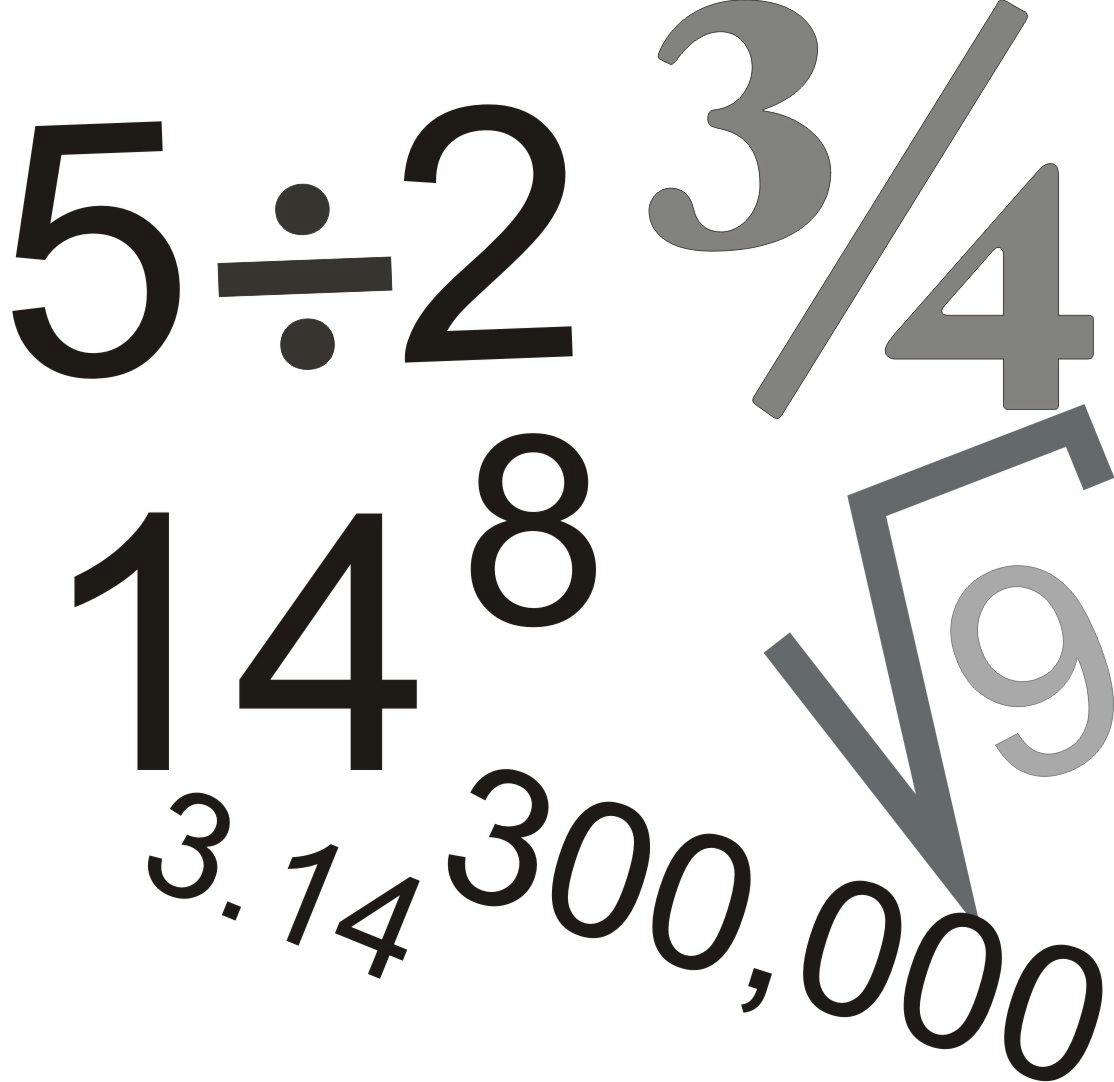Flames First Round Targets 2013: Aleksandr Barkov
By Kent Wilson
10 years ago
Although guys like Jonathan Drouin, Nathan MacKinnon and Seth Jones are probably out of reach for the Flames, there is an outside possibility a probable elite talent in Aleksandr Barkov falls to Calgary at 6th in June.
The native Fin with a Russian name has been on hockey’s radar for a long time and it became especially apparent he was a special player last year when he was one of the highest scoring teens in the Finnish Elite League (SM-Liiga) at just 16 years old. Most kids are just learning to drive at that age, but Barkov scored at 0.5 PPG pace in one of the best pro leagues on the planet.
To put that achievement in perspective, Barkov’s pace was the fifth best amongst teens in the league that year, behind only Mikael Granlund, Markus Granlund, Joel Armia and Teemu Pulkkinen and all of those guys were at least 2-3 years older.
Of course, we wouldn’t be talking too much about his rookie year if the 6’2" center didn’t follow it up with his remarkable sophomore effort. This year Barkov scored 48 points in 53 games for Tappara Tampere, good for second on the team behind for Flame Ville Nieminen who had 50 points – albeit in 4 more games played. Barkov also placed 9th overall in the league in both goals (21) and overall scoring. Keep in mind Barkov is actually one of the youngest available draftees this summer, with a September 2, 1995 birthday. He’s almost a full year younger than Mark Jankowski (Sept. 13, 1994) and Janko was the youngest guy drafted last June.
So yeah…the kid is good.
The Scouting Reports
Barkov has had a lot of eyeballs watching him the last few years, so the scouting reports tend to be in sync much of the time. Corey Pronman sums up the consensus pretty well over at Hockey Prospectus (where he ranked Barkov the 5th best prospect available):
Barkov is one of the greatest NHL Entry Draft prospects to ever come out of Finland. He is a tremendously advanced player, with elite hockey sense. He regularly logged 20 minutes this season, which is rare for a September-born 17-year-old in Finland’s top league. He has an incredible amount of patience, vision, and awareness. He can slow the game down and dictate the tempo, as well as be the focal point on the power play. He also has a high level of defensive skill, showing ability at a very young age to be a quality defensive center. He has good technique on faceoffs, as he keeps his hands low, pulling pucks back quickly.
Despite having good puck skills, he is not a player who will consistently try to stickhandle around players. He is selective, but he has the talent to create offense out of nothing. Barkov is a big, strong player. He will not crash and bang, but he protects the puck well. His skating is a tick below average. It is possible he could improve to an average skater, but his game will not be predicated on blazing past defenders. When bringing the puck out of his zone, he tends to prefer making a good pass rather than rushing the puck up.
For a first hand account of Barkov, I contacted Matias Strozyk of Eliteprospects. He provided this great account:
Apart from Mikael Granlund, Finland hasn’t seen a prospect of Barkov’s level in recent years. I’d say it’s even a pretty close call between those two and you lean towards one or the other based on what you’re looking for. Granlund has flair, soft hands and amazing creativity. Barkov has very good two-way play, a better frame and the strength to go along with it.Finnish prospects from recent years tend to be on the diminutive size and Barkov is a very welcomed exception. He doesn’t use his size to deliver big hits but protects the puck well and wins battles – partly thanks to his talent with the puck.Barkov was only 17 years old this past Finnish league season, his first full season with the pros but still became a key player for an eventual silver-medalist. Like last year, he missed some time at the end of the season, on this occasion due to a shoulder injury. Tappara were missing another top 6 forward as well and it’s not wrong to think it was a crucial point of the final series, which they lost in six games. The fact that a 17-year-old being sidelined was a potentially decisive factor in the Finnish league championship series sums up a lot. What’s even more impressive is that Barkov finished 9th in the league in scoring and recorded an average ice-time of 19:31 in 53 games – this during a season were he also racked up a few gruelling miles with the U20 national team.Barkov has exceptional hockey IQ, creativity and vision, while his defensive skills are far better than Granlund’s. He steals a lot of pucks and is hard to take the puck away from thanks to top notch stickhandling and great ability to protect the puck with his body. His biggest weakness is his skating, which I’m sure will improve over the next couple of years. To be honest, I think issues with his skating has even been a bit exaggerated – it’s not technically perfect and definitely not beautiful, yet powerful and surprisingly effective. Barkov has two special advantages that few Finnish prospects get to enjoy: his father and his winger.Aleksander Barkov sr. is a coach, most notably in the KHL, and a former elite player who certainly pushes him forward. A similar, if not an even bigger boost is provided by Ville Nieminen, who I’m sure most Flames fans are already somewhat acquainted with. Nieminen spent this past season playing in a line with Barkov and Henrik Haapala, another young prospect and took Barkov under his wings. They’re work-father – work-son type of relationship actually generated a now-popular quote from Barkov following a goal: "Nieminen once said that if you want to get a pizza, go to a pizzeria. If you want to get a goal, go to the net. So I went to the net."As an overall package, it’s hard to find a prospect of Barkov’s calibre from the draft. I think he’s unlikely to crack the top 3 and Elias Lindholm, maybe even Valeri Nichushkin could end up going ahead of him, but it would be shocking to see him miss the top 10. Barkov is already an elite center for the Finnish league with A) very good finishing, B) very good playmaking and C) very good two-way play. Plus, he’s already got the size and will only get better in everything else, including skating. How often do you stumble upon something like that?
To sum up: Barkov is big, strong, has excellent playmaking and offensive skills and is already a complete, two-way pivot. His only "weakness" seems to be skating, in that he isn’t blazingly fast.
Usually with kids of this age you have a couple of notable areas of strengths and the big question marks are if they will be able to translate their success against grown men and if they can develop a good enough all around game to be useful at the NHL level. Those don’t seem to be concerns with Barkov.
The Numbers

We have already established that Barkov has one of the best NHL equivalencies (NHLE) of this draft class at about 40. Typically any player garnering a 40+ NHLE in their draft year is a future high-end guy in the NHL, with a few rare exceptions. Given the difficulty of his league and the fact he was a key player on a pro team, we can assume Barkov wasn’t riding coattails or enjoying an unusually easy role to garner his offensive totals.
Jonathan Willis of OilersNation and Cult of Hockey did some leg work on Barkov in April and established he is perhaps the best Nordic prospect to arrive on the scene since Peter Forsberg:
Going strictly by the numbers, even at fourth overall (his expected draft position) Aleksander Barkov might be a steal of a deal. An analysis of first round picks out of the top men’s leagues in Sweden and Finland since 1990 shows that only Peter Forsberg can layclaim to a superior season at the same age.
…
At first, it looks like Barkov performs very well but trails three players – Forsberg and the Sedin twins. However, because the NHL draft cut-off is September 15, the comparison to the Sedins is misleading – with a September 2 birthday, Barkov is at the youngest end of his draft group, while with a September 26 birthday the Sedins were at the oldest end of theirs. In other words, the Sedins are three weeks short of being a full year older than Barkov at the time of these statistics, and so the proper comparison between Barkov and the Sedins is Barkov’s draft year versus the Sedins’ pre-draft season. At the same age as Barkov, Daniel Sedin recorded 13 points in 45 games in the Elitserien; Henrik Sedin recorded five points in 39 contests.
Conclusion
Barkov represents everything the Flames want and need, both now and going forward: a big, strong center with offensive ability and two-way ability. Because he is already a high-end player at both ends of the ice, Barkov is a good bet to develop into the sort of pivot who can both score and drive possession at the NHL level. That’s the sort of player one builds a contender around.
In many other drafts, Barkov would likely be in the conversation for first overall pick. It goes to show how dense the talent is at the top end this year that the big Fin might fall outside of the top-5. If he does and the Flames have the chance to take him at 6th overall when they walk up to the podium in New Jersey, they would be fools to pass on him.
Flames First Round Targets
- Aleksandr Barkov
- Sean Monahan
Recently Around the Nation
Over at LeafsNation, Jeffler uses research and numbers to kill the "Bozak and Kessle have chemistry" narrative:
It’s not crazy to say that a perceived notion of "chemistry" between Tyler Bozak and Phil Kessel is non existent. If anything, it’s one way. Bozak needs Kessel to score. Kessel doesn’t need Bozak to pass to him. The only time it seemed that way was for half a season, four years ago.
What we’re seeing now is a situation where because Kessel has grown as much as he has, it’s hidden the fact that Bozak has had almost nothing to do with it.
Recent articles from Kent Wilson




